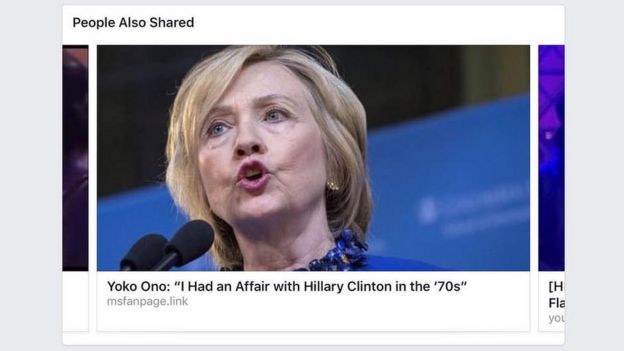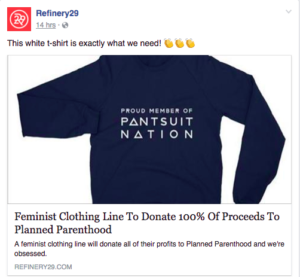From what started as a means for college students to connect across campuses, Facebook has evolved into an international communication channel and for many, a news resource and a platform to freely speak their opinions. Makes sense doesn’t it? Let’s be real: You spend way too much time on your News Feed. The NY Times reports that the average amount of time spent on Facebook is “nearing an hour”, and continues to increase. Outside of that hour, it can be difficult to set aside additional time to seek out our news from a different outlet. The problem with the current one-stop-shop model, is the risk of misinforming the reader with fake news and hoaxes. This became especially alarming during the 2016 Presidential Election, where many Americans believed that these fake stories affected the outcome and contributed to Trump’s triumph (sigh). As a result of the backlash, Facebook’s CEO Mark Zuckerberg has vowed to eliminate fake news and hoaxes from the News Feed, by allowing users to flag fake content for review and potential removal.
 Facebook touts the prowess of their beloved algorithm that aims to deliver only the most accurate and meaningful content to their user’s News Feeds. The more a user interacts with a post, the more that post will be seen. It can be a perplexing system for some, but once understood, can be very a powerful tool, especially for brands looking to solidify their position and increase awareness. Media brands like Refinery29 and DailyWorth have effectively used this tool, and often share stories to connect with their consumers. Many of these posts are political in tone, have a defined point of view, one that can potentially be disagreed with. If these brands choose to share a story that someone flat out does not like, a user will have the power to flag it for review and removal. This can jeopardize the connection that these brands has with their consumer and consequently affect their credibility.
Facebook touts the prowess of their beloved algorithm that aims to deliver only the most accurate and meaningful content to their user’s News Feeds. The more a user interacts with a post, the more that post will be seen. It can be a perplexing system for some, but once understood, can be very a powerful tool, especially for brands looking to solidify their position and increase awareness. Media brands like Refinery29 and DailyWorth have effectively used this tool, and often share stories to connect with their consumers. Many of these posts are political in tone, have a defined point of view, one that can potentially be disagreed with. If these brands choose to share a story that someone flat out does not like, a user will have the power to flag it for review and removal. This can jeopardize the connection that these brands has with their consumer and consequently affect their credibility.
 Brands already battle the algorithm as it is. They are constantly having to come up with cool and relevant content to break through the clutter. Now, they are forced to tread even more lightly with their social media use to ensure that their posts reach the intended audience. Zuckerberg has gone on to say that “identifying the ‘truth’ is complicated” but is committed to cleaning up the site. He’s right, it is complicated because one’s truth won’t be the same for another. Let’s just hope that he doesn’t inadvertently diminish the voice of brands and thus, valuable communication with their consumer.
Brands already battle the algorithm as it is. They are constantly having to come up with cool and relevant content to break through the clutter. Now, they are forced to tread even more lightly with their social media use to ensure that their posts reach the intended audience. Zuckerberg has gone on to say that “identifying the ‘truth’ is complicated” but is committed to cleaning up the site. He’s right, it is complicated because one’s truth won’t be the same for another. Let’s just hope that he doesn’t inadvertently diminish the voice of brands and thus, valuable communication with their consumer.

4 Responses to Facebook Vows to Kill Fake Stories– Are Media Brands In Trouble?